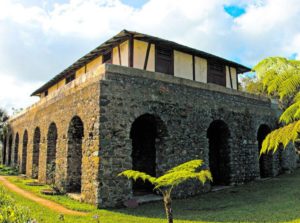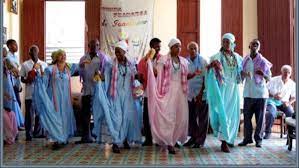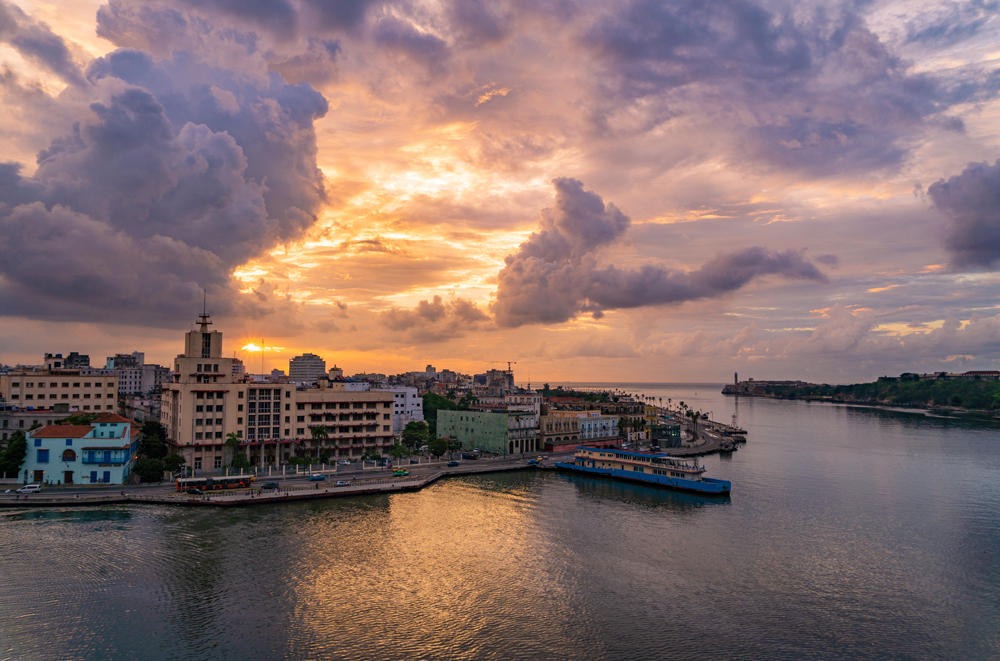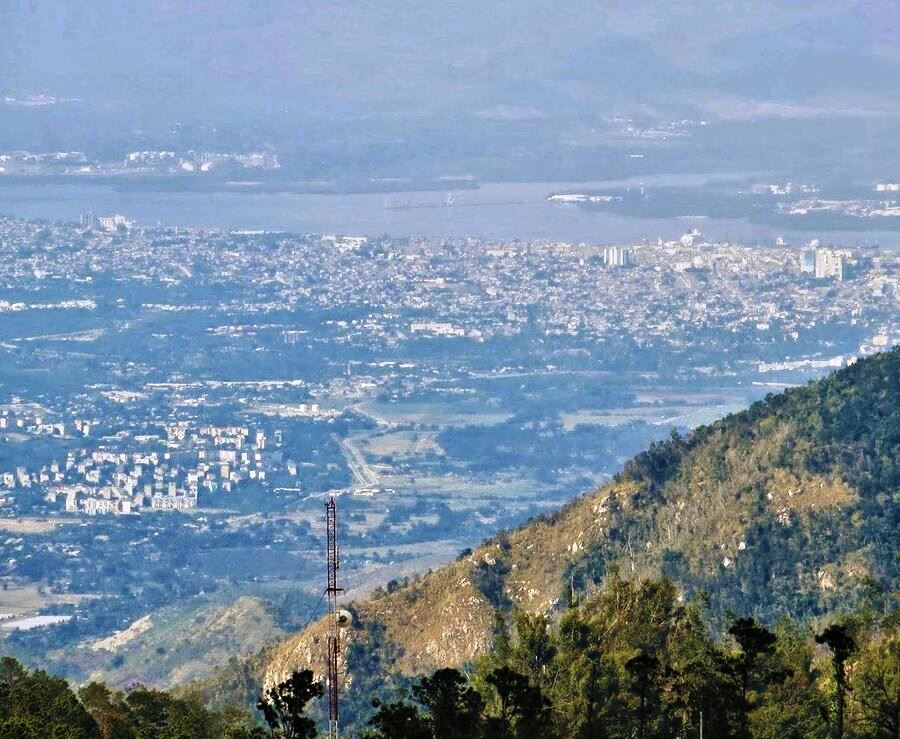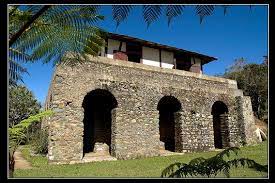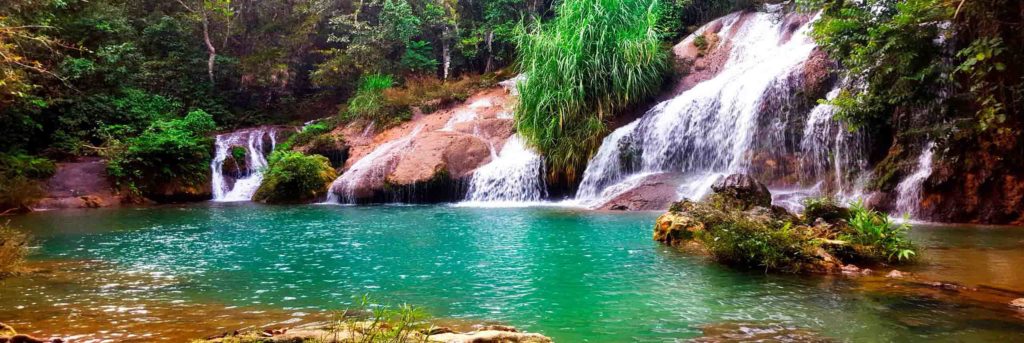CUBA’S FRENCH HERITAGE, AND HOW MUCH THEY LEFT US…
Every time I remember that for half a century we Cubans have been drinking coffee mixed with peas or other ground and roasted beans, the memory brings me to the origin of why Cubans are great drinkers of strong coffee and how we became a world coffee power.
But we owe the genesis of our taste for coffee to the French, one more among other gastronomic delights that they left us.
Probably many of us don’t know that when we say a phrase like: “I was at a banquet where croquettes, bottles of cognac, a stew, congrí, fillet, fricassee, strawberries with cream, jams, chocolates, cookies, ham, eclear, tartlets and other delicacies ”, all these words come from French. And we are referring only to gastronomic terms.
At first, coffee was drunk by pouring boiling water over ground coffee, and it was drunk without sugar in small cups, the size we are used to. The evolution of coffee consumption was, like many others, one of the many practices that resulted from the French Revolution and that influenced the change in food in the world.
Regarding us, what is truly surprising is that Vietnam, which four decades ago had no idea what it was to produce coffee, was advised by Cuban specialists and today it is the second world producer after Brazil and surpassed Colombia, an undisputed historical leader in this product.
While Cuba produced about 30,000 metric tons per year, reaching 45,000 in 1958, in 2012 production was only less than 5,000. An inefficient government, restrictive with private initiative and with a bad memory of what the French taught us, could not obtain another result.
And it all started with the French who emigrated to Cuba for the revolution in Haiti.
THE FRENCH COFFEE PLANTATIONS
As we saw the introduction of coffee cultivation in Cuba, it was in the town of Wajay by the Catalan José Gelabert with the aim of using it in the liquor industry, but this was only a timid approach to what would be one of the jewels of agriculture. Cuban. In the early nineteenth century, Cuba was synonymous with coffee and was the world’s leading exporter of that grain.
It can be said that the famous saying “Cuba is Havana and the rest is landscape” could also be applied to that era, so it is undoubted that the French emigration resulting from the Haitian revolution completely changed the decoration, it was the genesis from the emergence of Santiago de Cuba, where the mountains and their dense forests were transformed into paradisiacal places, emerging an economic and social life that made it possible for the coffee plantations created by the French refugees to become the most important production centers of the Island, only in second place after sugar mills.
Prosperity came to these regions with the arrival of the French, their customs, fashions, and ideas, although some came with what they had on and were not received with the same welcome everywhere, the cultural gap was overshadowed by the benefits that they brought in a short time.
A large number of landowners knowledgeable about the cultivation of coffee and sugar cane was joined by a high percentage of artisans of various trades, plantation technicians, and in different disciplines related to those industries.
Six hundred coffee plantations in the eastern zone and more than one hundred and fifteen in the western zone around Havana and more than twenty in the central zone of the country had a major impact.
Prudencio Casamayor, a Frenchman settled in Santiago de Cuba before the migratory wave, acquired from the Royal Treasury, estates in the surroundings of Santiago and in other nearby places, which he negotiated with the emigrants. Another Frenchman, Louis de Bellegarde, also bought the Santa Catalina herd in 1803 and also distributed the land, giving rise to the founding of the city of Guantánamo. Other Frenchmen associated with Cubans to found coffee plantations or married Cuban women and the patrimonial lands were dedicated to that cultivation.
In short, with small farms or latifundia, the French increased coffee production to levels never seen before and rapidly thanks to the technology they knew and the exploitation of slave labor. And within these plantations, some must be highlighted.
The elevation of the area, up to 1,200 meters high, meant that these were the lands chosen by the coffee growers and they became the center of the introduction of agricultural techniques in uneven and difficult terrain and in a crop unknown in Cuba.
The French coffee growers chose elevated land to locate the houses and thus dominate the entire property. They were generally very solid stone constructions, with two floors, with double sloping roofs to withstand the heavy rains in the mountains.
The remains of those coffee plantations not only show us how the French made use of precursor agricultural techniques in difficult terrain, but also because of their anti-seismic characteristics, already used in their incursion into Haiti.
The best example of the above is La Isabelica, one of the largest haciendas in Cuba. The Frenchman, Victor Constantin Couzo, created an icon of what it was like to exploit the virgin forest efficiently and responsibly with an emporium that fortunately has been preserved.
LA HERENCIA FRANCESA EN CUBA, Y LO MUCHO QUE NOS DEJARON….
Cada vez que recuerdo que durante medio siglo los cubanos hemos estado tomando café ligado con chícharos u otros granos molidos y tostados, la memoria me lleva al origen del por qué los cubanos somos grandes tomadores de café fuerte y como llegamos a ser una potencia cafetalera mundial.
Pero la génesis de nuestro gusto por el café se lo debemos a los franceses, una más entre otras delicias gastronómicas que nos dejaron.
Probablemente muchos no sabemos que cuando decimos una frase como: “Estuve en un banquete donde estuvieron presentes las croquetas, las botellas de coñac, un potaje, congrí, filete, fricasé, fresas con crema, confituras, bombones, galletas, jamón, ecléar, tartaletas y otras delicias”, todas estas palabras provienen del francés. Y nos estamos refiriendo solamente a términos gastronómicos.
Al principio el cafe se tomaba vertiendo agua hirviente sobre el café molido, y se tomaba sin azucar en tazas pequeñas, del tamaño de las que acostumbramos nosotros. La evolución sobre el consumo del café fue, como muchas otras, una práctica de las tantas resultantes de la revolución francesa y que influyeron en el cambio de la alimentación en el mundo.
Respecto a nosotros, lo verdaderamente sorprendente es que Vietnam, que hace cuatro décadas no tenía idea que era producir café, fueron asesorados por especialistas cubanos y hoy en dia es el segundo productor mundial después de Brasil y sobrepasó a Colombia, un líder histórico indiscutible en este producto.
Mientras que Cuba producía unas 30 mil toneladas métricas anuales, llegando a 45 mil en 1958, en 2012 la producción fue solamente de menos de 5 mil. Un gobierno ineficiente, restrictivo con la iniciativa privada y con mala memoria de lo que nos enseñaron los franceses, no podía obtener otro resultado.
Y todo comenzó con los franceses que emigraron a Cuba por la revolución en Haití.
LOS CAFETALES FRANCESES
Como vimos la introducción del cultivo del café en Cuba fue en el poblado de Wajay por el catalán José Gelabert con el objetivo de emplearlo en la industria de licores, pero este solamente fue un tímido acercamiento a lo que sería una de las joyas de la agricultura cubana. En los inicios del siglo XIX Cuba era sinónimo de café y era el primer exportador mundial de ese grano.
Se puede decir que el famoso dicho de “Cuba es La Habana y lo demás es paisaje” también se podía aplicar a esa era, por lo que es indudable que la emigración francesa resultante de la revolución haitiana cambió por completo la decoración, fue la génesis de la eclosión de Santiago de Cuba, en donde se transformaron las montañas y sus tupidos bosques en lugares paradisíacos, surgiendo una vida económica y social que hizo posible que los cafetales creados por los refugiados franceses se volvieran los centros productivos más importantes de la Isla, solamente en segundo lugar tras los ingenios azucareros.
La prosperidad llegó a esas regiones con la llegada de los franceses, sus costumbres, modas e ideas, a pesar de que algunos vinieron con lo que tenían puesto y no fueron recibidos con igual acogida en todas partes, pero el desfase cultural se vio opacado por los beneficios que en corto tiempo trajeron.
Al gran número de hacendados conocedores del cultivo del café y la caña de azúcar, se sumaron un alto porcentaje de artesanos de diversos oficios, técnicos en plantaciones y en diferentes disciplinas relacionadas con esas industrias.
Seiscientos cafetales en la zona oriental y más de ciento quince en la zona occidental en los alrededores de la Habana y más de veinte en la zona central del país, tuvieron un impacto de primer orden.
Prudencio Casamayor, un francés asentado en Santiago de Cuba antes de la ola migratoria, adquirió de la Real Hacienda, realengos en los alrededores de Santiago y en otros sitios cercanos, los que negoció con los emigrados. También otro francés, Louis de Bellegarde, compró en 1803 el hato Santa Catalina e igualmente repartió los terrenos, dando lugar a la fundación de la ciudad de Guantánamo. Otros franceses se asociaron con cubanos para fundar cafetales o se casaron con cubanas y las tierras patrimoniales fueron dedicadas a ese cultivo.
En resumen, con pequeñas fincas o latifundios, los franceses incrementaron la producción cafetalera a niveles nunca antes vistos y rápidamente gracias a la tecnología que conocían y la explotación del trabajo esclavo. Y dentro de esas plantaciones hay que destacar algunas.
Lo elevado de la zona, hasta mil doscientos metros de altura, propició que estos fueron los terrenos escogidos por los caficultores y ellos se constituyeron en el centro de la introducción de técnicas agrícolas en terrenos desiguales y difíciles y en un cultivo no conocido en Cuba.
Los caficultores franceses escogieron terrenos elevados para ubicar las viviendas y así dominar toda la propiedad. Por lo general eran construcciones de piedra, muy sólidas, de dos plantas, con techos de doble pendiente para soportar las copiosas lluvias en las montañas.
Los restos de aquellas plantaciones de café, no solo nos muestran cómo los franceses hicieron uso de técnicas agrícolas precursoras en terrenos complicados, sino que también son .por las características antisísmicas, ya empleadas en su incursión en Haití.
El mejor ejemplo de lo antes dicho es la Isabelica, una de las mayores haciendas en Cuba. El francés Víctor Constantin Couzo, creó un ícono de lo que fue explotar la selva virgen de forma eficiente y responsable con un emporio que afortunadamente se ha podido conservar.
Agencies/ MemoriasCubanas/ Carlos RodriguezB./ Internet Photos/ Arnoldo Varona/ VIDEOS – PHOTOS> LA HISTORIA DE CUBA
THE CUBAN HISTORY, HOLLYWOOD.




